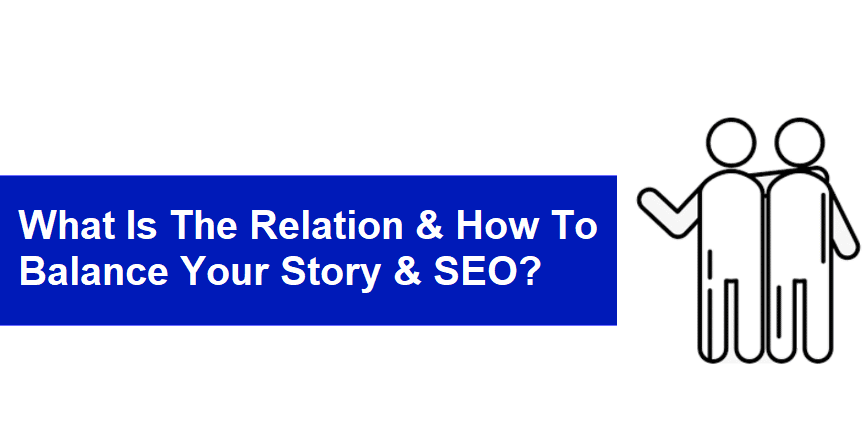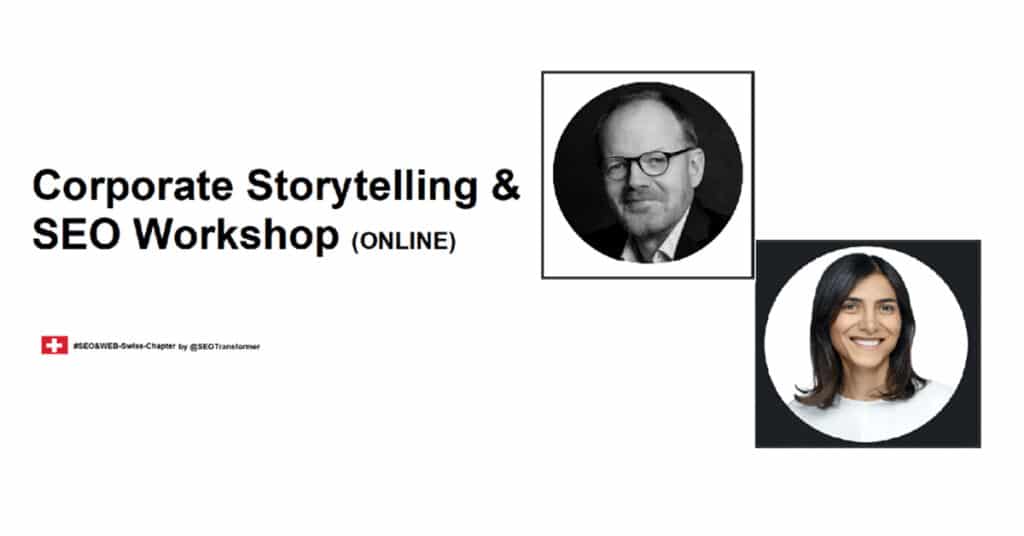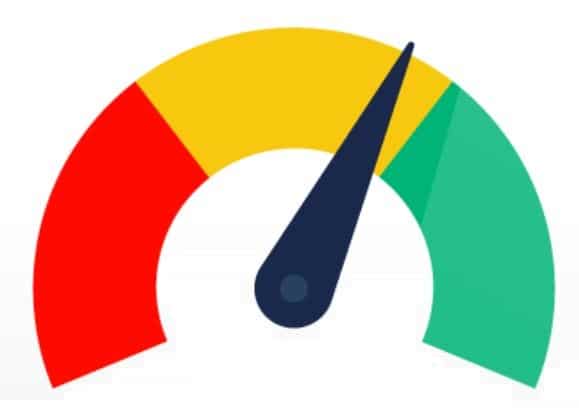Stories have the power to move us and change our behaviour, to shift us from indifference to positive, constructive action. But too many organisations throw away the chance to use this simple, straightforward technique to achieve their goals. Worse still, poor storytelling is losing them their audience, their reputation and their funding, which has a knock-on effect on staff morale and engagement.
The good news, however, is that this situation can be turned around and with powerful results. ‘Corporate storytelling’ is about helping organisations better reach their goals through accessible, compelling and moving stories. This webinar looked at how, when underpinned by the correct and effective SEO, Corporate Storytelling enables content creators to reach targeted and wider audiences.
Here we present the transcript of the workshop which has been presented on May 2022 by Nadia Mojahed an SEO Consultant, and Robert Bartman, a Corporate Storyteller of over 25 years’ experience, having worked for organisations as diverse as the UK government, the BBC and the United Nations, as well as several private companies.
Introduction
It’s great to have so many of you with us today, and welcome indeed to this webinar.
I’m assuming that you’re here at least in part because you’d like to know a bit more about how storytelling can have a greater impact for your organisation. I’m very excited about telling you what that’s going to look like – but also about the common mistakes and how you can avoid them.
It’ll mean you can ensure that all the time and focus you spend on storytelling frameworks are really going to make a difference.
Impact of Corporate Storytelling
So let me move on to why storytelling is so important.
Whether we work on our own as individuals or for large corporations, we all want the good news of the work we do to reach as many people as possible.
And the best way to do that is through storytelling – or as we’re discussing stories in the context of work, what I am calling Corporate Storytelling.
Stories have the power to move us and change our behaviour, to shift us from indifference to positive, constructive action.
Here are six reasons as to why I am certain that Corporate Storytelling is so effective:
1. Firstly, stories are more relatable to your audience.
This connection means they will trust you, the human – and therefore the brand. This is especially the case when the story is very relatable and has the added benefit of being easier to understand.
The audience can see even themselves as the character in the story. When you tell a story, you create a shared human experience. With more and better storytelling, you are creating a more sincere connection with your audience. Do you find this to be true? What is the experience from your own organisation?
2. Stories provoke emotional reactions, unlike facts and figures
So who loves reading items with nothing but facts and figures. I mean, really? In fact, have we ever seen articles with only facts and figures?
The best stories provoke emotional reactions. People typically make emotional not rational decisions so being able to evoke emotions through storytelling is a powerful tool
Let me be clear I don’t mean we should never use facts and figures – of course not – and just to prove that I don’t hate them, here are some!
Messages delivered as stories can be up to 22 times more memorable than just facts. Audiences retain 65-75 per cent of what a story contains, compared to only 5-10 per cent of the information in a list of statistics.
When reading straight data, only the language parts of our brains decode the meaning. But when we read a story, others part of the brain become activated as well. This means it’s far easier for us to remember stories than hard facts. At its most basic, good storytelling simply means people are likely to remember your organisation and what it does.
Have you read stories that have changed your mind, really grabbed your attention? Are there certain websites, especially in the ‘About Us’ section, that are particularly eye-catching?
3. Greater staff engagement
Employees are the heart of the organisation. They are the organisation’s best asset and an organisation only succeeds when its employees do.
There are some quite worrying indications, however, that there is widespread non-engagement.
For example, Gallup research suggests that 70 per cent of US employees are not engaged in or are actively disengaged from work. The right culture at work can be cultivated by the deployment of storytelling. This goes beyond sharing a successful vision. As well as the vision, stories about the company’s history should be shared, along with its struggles, values and aims. Share what’s important with your colleagues and explain what this means for them.
This will give them something to believe in and consequently they will believe more in the organisation. Put simply, more and better storytelling can mean greater staff engagement. Have you ever come across this – where stories about colleagues or what the organisation is doing has helped to bring you all together more?
4. Storytelling can boost organisational growth
A study in Harvard Business Review found that companies able to create emotional connections with their audience saw that customers visited their shops more, showed less price sensitivity, paid attention to store communications’ more, and overall recommended the brand more.
These companies saw a 15 per cent increase in the number of active customers and a 50 per cent increase in same-store sales growth.
Another academic article noted that 36 per cent of all types of organisations experienced positive financial impact to the bottom line – through increased growth, profitability, and/or increased funding.
More and better storytelling can boost your income or funding.
5. Enhance your reputation
Storytelling ensures that the change your work brings to real-life situations is seen to be making a difference.
6. Save time and money
By hiring an expert you’ll save time and money with research, messaging and content-creation.
So now I’ve explained how I feel corporate storytelling can help, you’re probably wondering what changes you can make for greater impact.
Well, we’ll certainly come on to that in a moment, but for now I’d like to say just a word or two about what you should avoid – what you should not be doing.
Six common challenges
Because as we know the world is a noisy place, and it’s not always easy to get heard. Worse still, you may not be doing as much as you could to get your story heard. So here’s a question – could poor storytelling be damaging your organisation?
Here are a few things you may be doing wrong:
1. Are you caught in the communicators paradox?
You may have the time to write good stories – but not enough time for other priorities? Or do you have time for other priorities but the quality of your messages suffers? How do you choose between the two – or is the decision made for you, even if you wish it went the other way?
2. Do you know your key message(s)? Really?
Or perhaps you’re not really sure what your message is – the essence of what you’re attempting to get your audience to do.
It’s important to distinguish between a key message and a ‘key fact’. A fact or series of facts will often underpin the messages, but they’re not the same.
So key facts are the information around which key messages are based, whereas a key message goes one step further and urges the reader to take action.
It really is not as unlikely as it may sound that organisations are often not clear about their key messages. Perhaps that’s another reason why facts and figures appear so often. Partly because they’re easy to write about, but partly because they’re a useful space-filler.
Any other reasons?
Perhaps it’s because we rely too much on what other people are giving us, and they don’t know what makes a good key message. So how can you be expected to know what the key messages are if people higher up the chain don’t Though of course there are definite tools and techniques we can use to change that, which I’ll come on to in a moment
3. Have you established your target audience?
This is clearly very closely related to key messages, but again the audience is easily forgotten. So here’s a basic question: who are your audiences?
And it’s not because there are too few – or no – audiences, but because there are too many.
Frankly, if organisations list ‘the general public’ as an audience or ‘awareness-raising’ as an comms objective, then I’m afraid – in my experience – more often than not they’re not really sure who the audience is at all (or at least all of the audiences)
So, fewer audiences are better than too many.
4. Is your staff fully prepared and supported?
Sometimes writing can look easy, simple even, because it’s everywhere and we do it all the time.
How often do you text and email each day, for instance?
I really have no idea, but if you’re anything like me, it’s a lot. Too much perhaps!
But there’s a world of a difference between writing for private consumption – for friends, family, even some colleagues – and writing for the world at large – a form of writing that, remember, has to persuade a lot of people to take a certain course of action.
Or perhaps the comms team may simply have too much to do.
I don’t necessarily mean that they are overworked, more that ‘communications’ usually means a lot of individual activities, which in turn takes up more time.
There’s likely to be some variance amongst staff in terms of their writing abilities.
But if more or even everyone in the comms team were able to write, it might save time and money. So is writing fully prioritised within your comms team?
5. Source material often not fully identified
This may sound like a strange observation, but it’s often true.
I’ve lost count of the number of times a client has sent me source material from which to write the first draft – only to discover that the really clinching information miraculously appears just in time for the second draft.
And of course, this is very closely linked to my point about key messages above.
If source material is incomplete, it’s likely because someone else isn’t clear about the key messages.
Has anyone else had experiences like this?
6. Storytelling low down priority list for other teams
I’ve left this point to the last, largely because it’s a case of ‘sad but true’.
Other teams one has to work with are often – quite understandably – so absorbed by their day-to-day work that they lose sight of storytelling.
Corporate storytelling is fundamentally about being able to tell great things about the work an organisation does.
And in this ultra competitive world, what’s the point of doing something so well if you can’t then shout about it from the rooftops?
My three-phased approach
But producing better stories is not just about the ability to write them.
You need a clear and consistent narrative – of course – but these must be underpinned by the right processes and great storytelling skills.
Here’s a suggestion about what to do next, a three-phased approach to make stories work better for your organisation.
Phase 1: Story audit
To assess the current impact of your stories and identify missed opportunities, I’ll conduct an audit of your existing stories
How these are shared and the attention they are commanding.
I’ll spend the time on gathering and writing stories that you can’t do yourself: this will simplify the research, drafting and even approval process
Following my conclusions, a select number of stories will be updated.
I’ll then work directly with your team to create a step-by-step message framework to make future stories more engaging so you can achieve more of your communications’ and corporate goals
Phase 2: Core organisational narrative
Creating a coherent and consistent organisational narrative helps unite both staff and external audiences around the organisation’s visions and values.
This consistency of the overall message will also ensure your individual messages stand out to the external audiences that count.
Phase 3: Skills Training
The third phase would involve a half-day workshop for key internal stakeholders on the practical application of both the story framework and organisational narrative.
This will ensure all members of your team can create powerful stories and content. It’ll increase efficiency and expanding your reach and impact. It will prompt discussion, investment and above all – action.
Story audit free consultation
Now if all or some of this resonates with any of you, I’d be delighted to offer a free 30-minute consultation to help you plug any gaps you might have. That consultation would take place after an audit – also free of course – of three of stories from your website. So do message me on LinkedIn.
I hope you’ve enjoyed what I’ve had to say and thank you very much for listening. And without further ado let me hand you all back to Nadia and Search Engine Optimisation.
Part two: Search engine optimization (SEO)

helps bring targeted users to your website. Once users are there, your
story will compel them to read further, press on other links and read more
content (which is a signal for Google for a quality and engaging content), book a demo or purchase products.
Balancing Storytelling & SEO
Many think that SEO will impact negatively your brand because you will need to use specific keywords which won’t necessarily go along with the copy. The good news is that this is a misconception. The purpose is to optimize your text as naturally and organically as possible and not to compromise your story. You will need to find creative ways to add keywords and structure the content to synchronize both SEO and storytelling together.
With search engines getting better at understanding context, and users’ intentions when searching the internet, Storytelling has more room to wiggle. Yet you will also need to make sure your users know what expressions and terms you are using.
Let’s take an example. For your story, you might use ‘sled’ instead of ‘sledge’, ‘precipitation’ instead of rain, or ‘tittynope’ instead of ‘small amount of leftovers’. Google will understand that those words are the same and might show your page for users searching with those terms. However, would your users know those words? If not, they will not choose to click and visit your page, and will go to the other pages that use the wording they know.
This is especially important for your main page header and metadata. Those impact your click-through, and bounce rates respectively.
A simple test you can do before deciding on your main header is to check what Google displays when searching using the terms in mind. Simply do a Google search, and check the top results on the search engine result page for the specific keyword. Explore the type of content of those pages, (video, image, articles, landing pages, or others), and what headers they use.
Continue further to the bottom of the page to examine the ‘Related searches’ Google displays.
You also can use Google autocomplete function to explore related searches, wordings and expressions.
How technical page elements can impact your story
Put simply, there is no value of great content if search engines and users cannot access it.
Page accessibility
Working in SEO for several years, I still see important pages to the business not available to Google due to technical issues. The fact that you can navigate to the page from the website, does not mean that it is accessible to search engines. For that you need to make sure your page has no technical issues before publishing it, and whenever making changes to it.
Page speed
Another technical-related element you need to look after is your page speed. That can impact your organic rankings, your customers satisfaction, and conversion rates. An SEO expert will help your web developer define the technical elements to improve, and work together with her to source solutions that work for your website technology and setup. Also to find the balance between the page speed optimization and your branding, such as image display quality, or the use of JavaScript code that add amazing animation to your website. With the help of an SEO expert you can prioritize what to optimize and how to compensate for the elements you won’t compromise.
Mobile-friendliness
Mobile friendliness is important for many reasons, to name a few:
– Many websites generate more traffic from mobile compared to the desktop
– Even if desktop drives more visibility, mobile generates more clicks
– Having social media as a channel to generate traffic to the website
Application, do you start with writing or optimizing your content?
An SEO expert will help you set your process after discussing it with your content writer(s). To start with the optimization part can be more effective for multi-lingual websites and it will save time and effort for iteration.
Content optimization usually comes following setting up an SEO strategy, and content audit.
Final words
Your website needs both a good story and SEO to attract readers, engage and retain them. It saves substantial time and effort investment to set the right processes from the beginning, or to take the time to evaluate your current processes and optimize them to drive results.
Reach out if you have questions, or if you would like to discuss your content production and optimization process, or organise a custom workshop!









